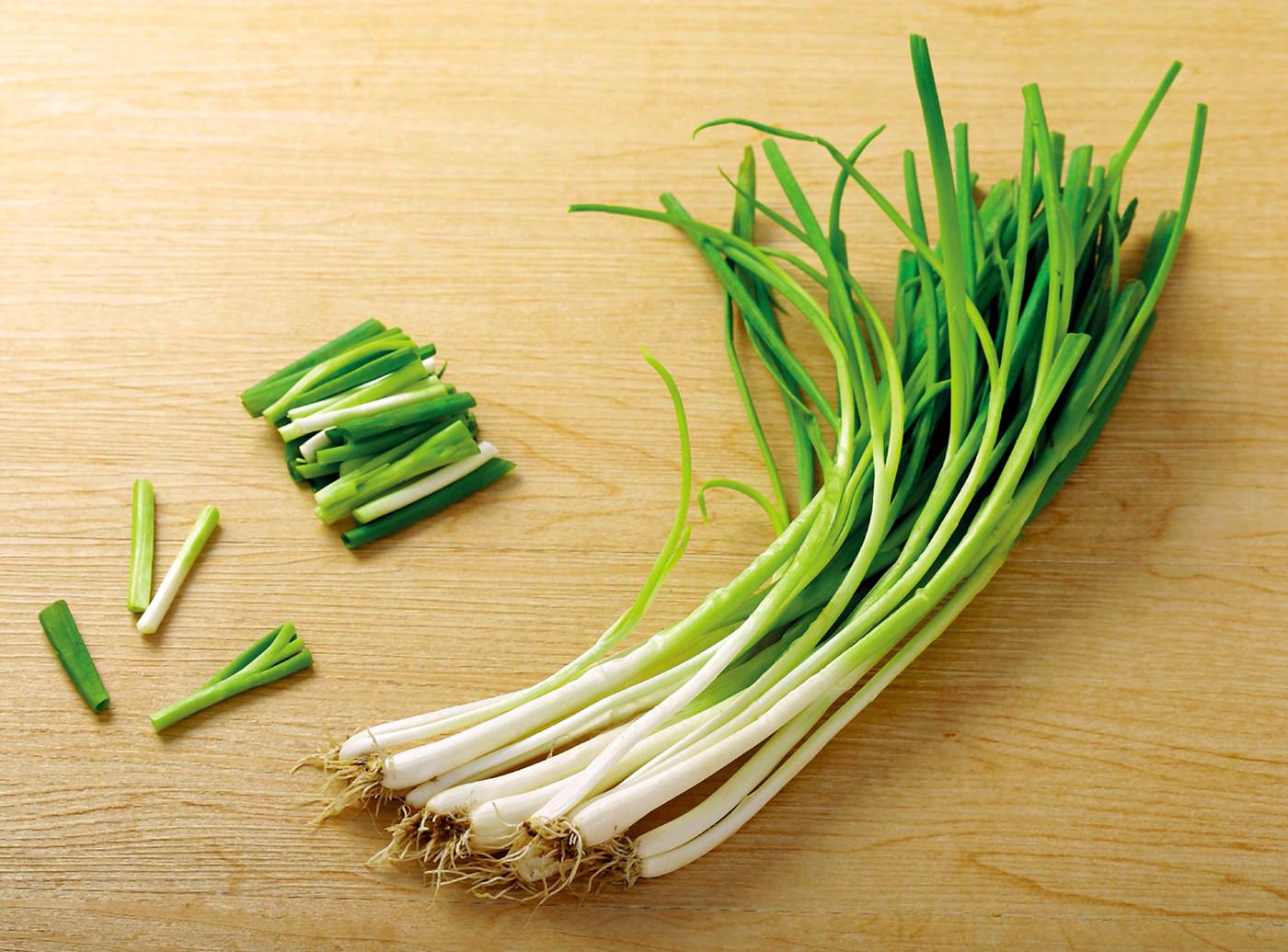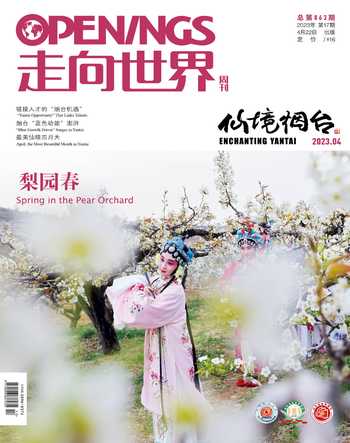發芽蔥
孫為剛

冰雪消融,春草綻綠。初春,一種沾著泥土、帶著枯葉、露出嫩芽的蔥悄然上市,這便是家鄉的發芽蔥。
發芽蔥是大蔥的一種。大蔥乃山東特產,由根、葉、莖組成,其主要部分俗稱蔥白,學名假莖。發芽蔥因其在嫩芽初發時即出土上市,故得名。
發芽蔥與其他大蔥的不同之處在于,它不是春天栽種,秋天收獲,而是秋天栽培,春天出土。冬天來臨時,鄉親們將壟背培土,將蔥白深埋。在北方漫長的冬天里,發芽蔥在大地的懷抱里享受雪水的滋潤,吸取泥土的濡養,這讓它從形狀到口味都顯得與眾不同。發芽蔥的葉片尖而厚,蔥白潤而白,味道鮮又嫰。發芽蔥是時令蔬菜,圖的是個新鮮,待到嫩芽長成了綠葉,蔥白不再細嫰脆生,便不叫發芽蔥了。因此,每年冬天剛過,新春初臨,嬌嫩的蔥芽剛剛鉆出地面,菜農們便迫不及待地將發芽蔥從地里挖出來。帶著地里的土渣子,頂著冬天的干葉子,發芽蔥就這樣不修邊幅地上市了。莫怪發芽蔥的自暴自棄,也別怨農家的匆忙大意,發芽蔥要的就是搶個先、圖個鮮、賣個好價錢。
眾所周知,蔥除了調味和入肴,還可生吃。山東人乃至整個北方人,尤以生食為佳。《中國實業志》載:“蔥,魯人多生食。”在生吃的大蔥中,發芽蔥是首選品種。
生吃大蔥,山東有兩種吃法最為著名:一是煎餅卷大蔥,二是大蔥蘸醬。無論哪種吃法,發芽蔥都是生吃大蔥的首選,都是山東人的最愛。剝去干枯的葉子,露出嫩綠的蔥芽和象牙般的蔥白,此時的大蔥經歷了一個冬天的冰封雪凍,已經濾去了辛辣,只留下微甜,蘸上大醬,美美地咬上一口,甜絲絲,脆生生,斷茬處流出乳白色的汁液,一個字:“美!”兩個字:“特美!”在我的老家,將吃發芽蔥稱作“咬春”。你聽聽,多生動的字眼,鄉親們感受春天,竟然是從這不起眼的發芽蔥開始的。
可能是越冬的需要,與普通大蔥相比,發芽蔥的線狀根須特別發達,細密綿長。記得小時候,姥姥在我家主政,本應扔掉的發芽蔥根,她老人家也不舍得丟棄,而是洗凈切碎,打上個雞蛋,或是放上勺蝦醬,攪一攪,熥咸菜吃,那味道至今令人回味。我想,姥姥的做法,或許不僅僅是為了節儉,更是出于對發芽蔥的一種摯愛。
毋庸諱言,因為大蔥含有揮發性硫化物,尤其生吃,會產生不好的氣味,歷來為文明人所詬病。但是,這些弊端擋不住山東人對發芽蔥的摯愛,人們在想法去除口中異味的同時,依然照吃不誤。我想,不是愛到極致,不會如此執著。
大蔥是四季蔬菜,即使沒有塑料大棚,一年四季人們都會見到大蔥的蹤影。但是,發芽蔥不同,每年上市的時間很短,真的是“過了這個村,就沒有這個店了”。對于喜歡發芽蔥的山東人來說,若是錯過了時機,就會后悔一年。今天,隨著塑料大棚的普及,發芽蔥也走進了大棚,成了溫室里的寵兒。雖然也在初春上市,但是,大棚里的發芽蔥沒有經歷風雪的折磨,模樣兒雖然比露天地里生長的發芽蔥干凈水靈,但是口味、營養就實在不敢恭維了。
啊,家鄉的發芽蔥,無論我走到哪里,每到春天,我就會想起那甜絲絲、脆生生的發芽蔥。
Sprouting scallions are a special type of scallions, a local vegetable in Shandong. They consist of roots, leaves and stems, among which the stems, with a scientific name of cauloid or popularly known as scallion stalks, are a major part of scallions. They get its name because with the coming of spring these scallions buried in the soil will sprout and are sold on the markets.
Unlike other types of scallions which are usually planted in spring and harvested in autumn, sprouting scallions are cultivated in autumn and reaped in spring. When winter comes, farmers bury the scallion stalks deeply by adding more soil over them. In the long winter of northern China, they enjoy the moisture of snow water and absorb the nourishment of soil, which makes them unique in both shape and taste. With pointed and thick leaves and white and smooth stalks, sprouting scallions taste fresh and tender. Sprouting scallions are seasonal vegetables and they cannot be thus called as soon as the tender sprouts grow into leaves when the delicate and crispy taste disappears. Therefore, every year in the early spring when the tender sprouts grow out of ground, the sprouting scallions are dug out by vegetable farmers and brought to the market still with soil residue or dry winter leaves. Of course, the untidy appearance of sprouting scallions is not the fault of the scallions themselves or the vegetable farmers. The most important things about sprouting scallions are timeliness, freshness, and good prices.

